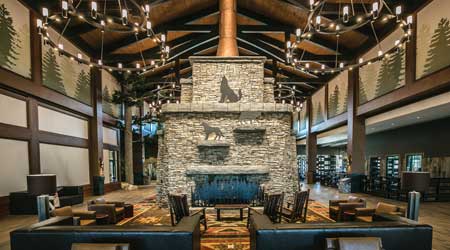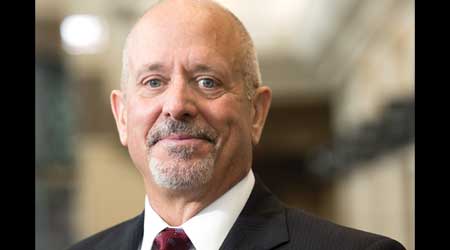How to Get Staff Buy-In for Energy Efficiency
Bob Holesko is adept at making water and energy conservation personal. He puts efficiency in terms staff and guests can understand, and that helps create buy-in across the organization.
To gain buy-in for energy conservation projects from rank-and-file workers, it’s increasingly important to highlight the projects’ environmental benefits, Holesko says. This might mean, for instance, calculating that a lighting retrofit is the equivalent of taking 500 cars off the road or planting 2,000 trees. Many employees today, including front-line workers charged with turning off lighting or air conditioning systems, want to know their employers are striving to minimize any negative impact on the environment.

(At Great Wolf, the efforts of Holesko and his team have led to reductions in gas and electric consumption of between 6 and 10 percent at each lodge.)
“The most powerful energy conservation piece of equipment in a hotel or retail facility is a light switch,” Holesko says. Turning the lights off and the thermostats down when leaving a room can lead to cumulatively impressive cuts in energy consumption.
To emphasize this point, during new hire orientation sessions with housekeepers, dish washers, and other workers, Holesko places a one-hundred dollar bill on the table, and tells attendees, “Anyone who answers yes to this question gets this hundred-dollar bill.” Then he asks the group, “Who left home this morning leaving all the lights on, the stove on, the hot water running in the sink, the refrigerator door open, and the air-conditioning or heating cranking?”
No one ever answers yes, Holesko says. “I remind them that every single day at this hotel, we’re propping open cooler doors, leaving lights on, letting water run, and setting the thermostat too high or low. And it costs money, just as it does at home,” he adds.
“In order to make anything happen with energy conservation, you have to really be a cheerleader, and driven and passionate about the cause,” says Dan Walworth, executive vice president with HEI Hotels & Resorts, and a former colleague. “Bob knew how important it was and how the hotels and HEI would benefit from paying attention to it.”
In the early 2000s, Walworth worked with Holesko to design spreadsheets showing, for instance, the savings from switching a 100-watt incandescent bulb to a 20-watt compact fluorescent lamp. An accurate estimate would factor in, for instance, how long each light is on and off. When it came to indoor heating and cooling, the calculations also had to account for weather conditions and occupancy levels. Walworth developed an early regression analysis model that would allow for comparisons between, for instance, the same date each year, Holesko says. Back in 2004 or so, this capability was still new, he adds.
Holesko’s ability to ask for input when needed has been another key to his success. While some people reach a point in their careers where they think they know it all, Holesko hasn’t, says Richard G. Lubinski, president of Think Energy Management LLC. “He’s not afraid to take advice from others.”
Everyone on the same page
Even relatively straightforward conservation projects take on added complexity in a hotel. “The number one obstacle is doing renovations and retrofits while the hotel’s open,” Holesko says. “It’s not like retail, where you can shut them down at night and the crew goes in there from ten p.m. to six a.m. and lets it rip.”
Several steps are key to effectively managing the projects in a hotel setting, Holesko says. With lighting or mechanical retrofits, daily morning meetings with the project superintendent, director of engineering, and key hotel or lodge managers are critical to ensuring that appropriate guest, meeting, and other rooms, are blocked. Without the regular check-ins, the front desk staff might inadvertently assign a guest to a blocked floor.
Also critical are weekly progress meetings to review future scheduling, as well as any change orders, among other information. “These meetings ensure that when the job is done, there are no surprises,” Holesko says.
And as with capital initiatives at most organizations, obtaining approval to make the investments can be a challenge. Holesko’s strategy? “You have to be able to talk CFO language,” he says. This means shifting from kilowatts and therms, important as they are, to financial metrics like payback and internal rate of return. The goal is to show how a project quickly will enhance the property’s financial performance and value.
Even with all his successes, Holesko still has a few goals to achieve, he says. One is to win his fifth Energy Star Partner of the Year award, which would leave him tied for the most won by an individual, and the first (to Holesko’s knowledge) to win it with two different companies.
No matter what happens with the awards, Holesko will continue to enjoy his job at Great Wolf. As he told his sons when he got his job, “I’ve got over a million square feet of indoor water park as a new toy,” he says.
Karen Kroll, a contributing editor for Building Operating Management, has written extensively about real estate and facility issues.
Email comments to edward.sullivan@tradepress.com.
Related Topics:
















